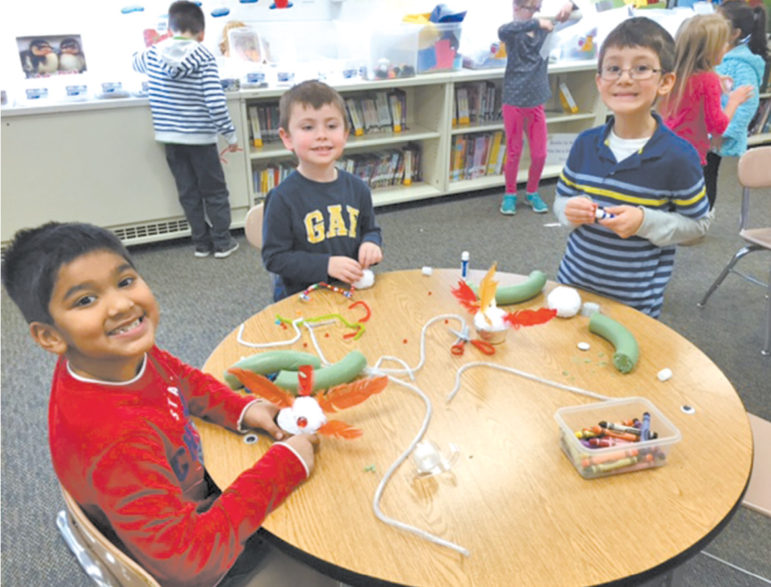
Photo by Scott P. Dunn
Spaulding School first grade students (clockwise) Ryan Dave, Ethan Cromack and Jacob Carreira remain engaged and collaborative during a makerspace project in the library media center.
In the past few decades, there has been a technology surge that has created the need for the reevaluation and transformation of the traditional library and the role of the media specialist. With the explosion of the information and technology age, school libraries have found the need to reinvent themselves to remain current and essential in preparing students for the future. In today’s world, information and social networking is available at the touch of a button. Students expect to connect to anyone, anywhere at any time. The question then becomes how do we create an engaging and thought-provoking environment that appeals to all learners when answers are almost always at their fingertips?
School libraries now face the task of developing a space both physically and virtually that bridges the current educational philosophies with the real world. This new hub for learning is referred to as the learning commons, something like a makerspace, but without the 3-D printer. Students, teachers, administrators, and support staff consider this to be a school-wide gathering space where learning takes place on an equal plane. Each individual is in charge of their own learning.
This shared space is for participatory learning, where collaboration, tinkering, building, brainstorming, and sharing draw in learners, providing spaces that change to meet the evolving needs of students and staff and allows for various types of learning activities. These areas include collaborative work spaces, quiet spaces, comfortable reading areas, experimentation spaces, and spaces with access to various types of technology. Most importantly, the space is flexible. Large group tables break off and become small group or individual work spaces. Tables, chairs, and bookcases are movable to construct learning areas. The spaces provide for an effective learning commons that is alive with the voices of students and staff engaged in learning together. While a learning commons will look differently in every school, it should share the common theme as being the center- a space that belongs to all. However, a successful learning commons is not just about the space. It relies on the strength of the relationships it supports whether it is student to student, student to staff, or staff to staff.
Spaulding School has shifted to this impressive model, allowing the school librarian to reach every teacher and student. We hope that you will visit Spaulding School and check out the transformation of the space and the engagement of our Spaulding Star learners as we prepare them to be future citizens in a society that is ever-changing.